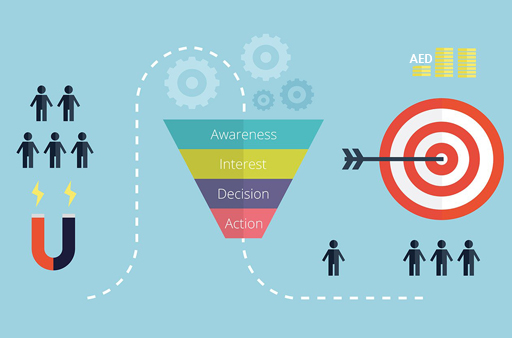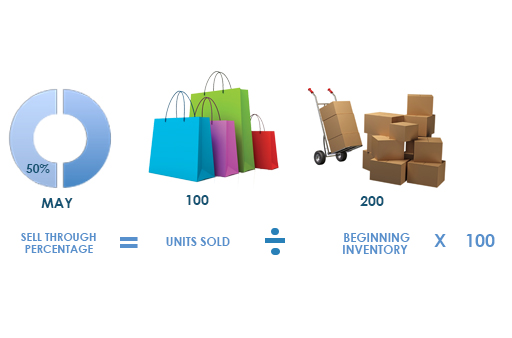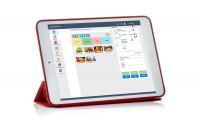10 Key Performance Indicators and Sales Metrics Business Owners Should Monitor
Published by: Nikkolai S. Palaming
Have you ever came to a point that you that your lost with what's happening in your business You often find yourself spending more than what you earn? If you got stuck on this dilemma, why not take a look with your sales, assets, inventory to see what are the area you can improve.. As an Owner, the key performance indicators you should look at vary from every industries.You might find some other indicators more significant than the others
But in order for your to hover in the right direction, we prepared some key metrics that can tell you about the health of your business, at the same time, tips on how you'll gonna improve it.
Sales Metrics and KPIs
Sales is the Lifeblood of the business, so it is very critical for every business owners to keep an eye on it.
1.Sales Percentage Contribution per Sales Person
It is calculated by how much your Sales Person Contributes to the Overall Sales of the business
Example: Amount Closed by Salesperson / Total Sales X 100
Why do I need to measure It?
By doing this you can check if your Sales Team is as profitable as they should be. I've read an article written by Brent Combest, Director of Worldwide Partner Group about 10 percent-cost-to-sales ratio sales team
Here's how the math works: The COS or the complet cost of your sales represeantive (including base salary, commissions, visa cost, cost-of-training and benefits ) divided by the annual revenue the provide the business. So to hit the sweet spot of 10 percent, if you pay them example AED 5,000.00/month they need to generate at least AED 50,000/month.
How to Improve It?
If your organization is not meeting the 10 percent metric, there are ways to begin with to hover into the right direction
- Raise your Sales Quota
- Use another Sales Model like creating Channel Partners that would sell your services on Commission basis
- Maybe it's time to establish your e-commerce site, sell your products or services online to downsize the number of your sales people
- Encourage virtual Selling- To lessen the time spent by your Salesperson travelling
2.Gross Profit Margin Percentage
This metric calculates the revenue remaining after you deduct all the cost of goods sold or cost of the service rendered (Note: It does not include the deduction of the operating expenses)
Cost of Goods Sold Defined: Mainly referred to cost of sales ,is the direct cost to the production of a certain product or service
Example: Cost of Materials for production, Cost of Direct Labor
Computation: Sales - Cost of Goods Sold / 100
It will show for every 1 Dirham sales how much money left to pay for you Operating Expense
Proper checking of your gross margin, will let you know if your have enough money left to pay you operating expenses.
How to improve the Gross Margin Percentage?
- Increase the price of your product if the Gross Profit is too low for as long as it is still competitive in the market
- Automate your business process, that will lessen the cost incurred for direct labor
- Take cash discount to suppliers
- Purchase an accounting software to prevent cash sales shortfalls
- Great track of your inventory to avoid wastage or dead stocks
Upcoming Article: Stay tuned with next article about Tips on how to price your Products/Services
3. Net Profit Margin
Is the percentage of Revenue remaining after all operating expenses,interest, taxes and preferred stock dividends have been deducted from Sales.
Formula: Gross Sales  - All Expenses / Gross Sales
Why Should I Measure It?
Example: Company XYZ earned a Gross Sales of AED 500,000 on the sale of their merchandise , their expense incurred for the whole year is AED 250,000 .
= ((AED 500,000 - AED 250,000))/AED 500,000
= .50

To simple interpret it, for every 1 Dirham Sales you have .50 fils net income.
If you're looking to attract investors for your business, the Net Profit Margin percentage is the first financial data they are looking at. It shows how well the business is converting their sales into profits.
How to Improve Net Profit Margin?
- Check the companies expenditures on production of the products
- Check the prices, if you need to raise it
- Check the companies expenditures on Operation
4. Customer Foot Traffic for Brick and Mortar Retailers
As Retailers you are all aware of foot traffic as a key factor for any successful brick-and-mortar location. It a chance for retailers to connect to Real Shoppers and convert them from visitors to customers
Why do you need to Measure It?
When you are new business and currently in search of a perfect buness location, definitely this is something you should look into. You need to check what a certain location might bring you, which spot will bring more customers. You should remember that PLACE is one of the 4 p's Marketing that you need to establish perfectly alongside with right Product, Price and Promotions.
How to Improve It?
A lot of strategies are available now to lure potential shoppers, so we cuarated a length out-of-the-box strategies to increase customer foot traffic that you might haven't explored.
 Make a Compelling Singage
Make a Compelling Singage
 Create a Google My Business Account
Create a Google My Business Account
 Provide free WIFI
Provide free WIFI
Coming Topics: How to Improve Customer Foot Traffic for Brick and Mortar Retailers.
Coming Topics: How to Improve E-commerce Site Traffic
5. Conversion

Do you have a lot customers visiting your stores or do you receive a lot of inquiries but too few are converted into Sales?A lot of Retail Visitors, not enough Retail Customers or very Low Customer Transaction?
There’s no question that store traffic volume and patterns are changing. And while many believe the root cause is a cataclysmic shift of shoppers to online, the fact is there are many potential factors contributing to the changing state of store traffic including demographics, economic conditions, political uncertainty, the weather and the inevitable result of an overbuilt retail industry – too many stores chasing a finite number of shoppers.
Do you know that Conversion rate in Brick-and-Mortar is higher than Click and Mortar Stores ?
I know you that Retail Owners track the traffic and measure conversion but how many of them or probably you, actually do something to optimize or take corrective action about it, maybe not that much ?
6. Sell Through Rate

It is a metric of comparing the amount of Inventory a retailer receives from a manufacturer or supplier against what is actually sold to its customer.
Why do I need to Measure It?
Sell Through can be used by Retailers as a scorecards to suppliers or vendors. It is a technique to help you get better pricing or markdown in Dirhams for the price of the products or even a free freight on your orders.
The space that dead stocks could be give to a product with strOng sell througH rate. Remember these dead stocks stops you to order fresher and better products until you sell-through them. Keep your store fresh and engaging always
7.Sale per Square foot
It is a year over metric that shows how much you generate from each square foot of area in the retail store.
Example: If you have fashion store sold 1,000,000 dirhams worth of merchandise in a 1,080 sqft store then we can assume that your store has AED 926.00 sales per square foot
SPSF= Total Gross Sales / Total Area of the selling space
This Metric shows the effectiveness of store layout and the sales person manning it. Knowing and measuring its effectiveness shows which layout need to be re-design
Did you know? In 2011, Apple was found to be the Top Retailer with $5,626 in sales per square foot.
Why do I need to measure it?
Knowing your Sales per Square Foot will help you in Calculation and Negotiating in the next renewal of your rent next year.
8.Customer Retention Rate
It is a metric that indicates the proportion of customers that have stayed with your for a given period of time. The retention rate however like any single metric , it is only one piece of a more complex view of an organization 's success in retaining customer
Formula: ((CE-CN) / CS)) X 100
CE= Number of Customers at the end of period.
CN= Number of Customers acquired during period
CS= Number of Customers at start of period
To better understand this, let's put it in a narrative. Assumming you started with 100 customer base , at the end of the period for example 2 months you have 300 customers, let's say 50 of which are new
CRR = ((200 -50))/ 100) X 100%
=150%
Why do I need to Measure It?
CRR is a simple calculation it has a lot of value. You might say that it's okay, for as long as that your sales tea, sell no need to check CRR
However, there is a saying in business it is more costly to acquire new customer than retain them
Why do I need to Measure It?
You need to know first what retention means to your business, mostly CRR is very relevant KPI for business with a recurring revenue dynamics (charges monthly like membership businesses )
Lets try to go back why do we need to measure it considering the following circumtances
- If you're losing customers or the retention rate is too low, but you replace it with more valuable customers, the attrition is less concerning , particularly in short term.
- It also reveals whether your marketing and customer care efforts are bleeding dirhams or fortifying your business.
- If you're retaining customers but they're downgrading their packages packages or spending less, then a high CRR is quiet misleading
How to Improve it?
The process of improving the CRR is'nt cheap . You need to invest into Loyalty programs, and you might need to invest as much as 10% of your sales for it. But one part of it that is cheap and very viable and effective is to train your staffs down the line to live into the importance of excellent pre-sales to aftersales customer service. It is a best indicator that your customer will come back in the future.
Upcoming Articles: Proven Awesome Loyalty Programs that keeps Customers coming back for more
9.Customer Lifetime Value
Total Amount of Customer spends on average, over the span of their relationship with your business.
Do you remember receiving a Survey form from Restaurant Staffs? Usually asking your about the frequency of visits in the store, Minimum amount spent every transaction and of course the overall experience in the restaurant. Do you even wonder why their asking those questions. This data are particularly use to calculate the so called Customer Lifetime Value
Why do I need to Measure It?
Customer Lifetime Value
(( Average purchase value X Average Number of Visit per Customer) X Gross Margin %))
Example: Average Purchase Value per Customer is AED 100 , the average number of visit is 3. This would mean you have average of AED 300 Gross revenue per customer multiply it with your Gross Margin % ( GM % = ((Net Sales-Cost of Goods Sold)) X 100% ) for Example your GM % is 10%. So it means you get AED 30 net earnings per customer
Tip: To accurate calculate this one, I suggest use Net Profit Margin percentage (Net Sales / All Expenses (Except Marketing) X 100.
What does it tell you?
This metric suggests how much is it worth spending to acquire a customer or how much the business can spend in Marketing to turn low to mid- value customers (Low frequency of visits or Low Transactional amount) to change their buying behavior in a way that they can turn to be high value customers.
10. Gross Margin Return On Investment
Indicates how much gross margin you get back from each dirham invested in inventory.
GMROI: Annual Sales / Average Inventory Cost X Gross Margin
Example:
| GMROI | Department | Annual Sales | Average Inventory | Gross Margin |
|---|---|---|---|---|
| 0.92 | A | AED 400,00 | AED 200,00 | 46% |
| 0.73 | B | AED 300,00 | AED 180,00 | 44% |
| 1.05 | C | AED 240,00 | AED 100,00 | 42% |
| 1.33 | D | AED 200,00 | AED 60,00 | 40% |
Department D: You have to admit, you find guilty by assumming that Department D is the unperforming one since it has lowest sale and margin amongst Department
GMROI: provide good insights on the productivity of your inventory investment. GMROI challenged you and give you insights of which product you should carry, or even vendors you should buy from
Businesses live and die by their numbers. The success of your business in the ever changing marketplace boils down of how your business can meet goals track and control inventory and maintain and even surpass monthly sales performance. Defining the metrics that matters the most to company strategy prevents information overload and ensure all entities are focused on most critical KPI's.




- No comment





